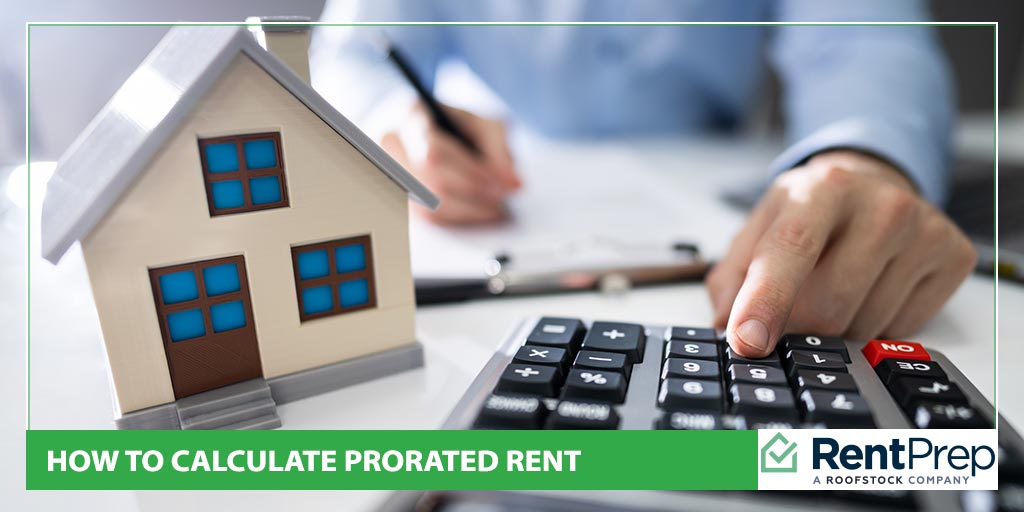
When a tenant won’t be living at your property for a full month, it’s unlikely they will want or be willing to pay for an entire month’s rent.
And you shouldn’t expect them to!
Instead, you should make the most of flexible move-in dates while still keeping consistent rent due dates by using prorated rent. Not only can using prorated rent calculations help you get tenants into a property faster, but you can also allow flexibility in move-out dates without losing any real profits.
Understanding how to properly calculate prorated rent will ensure that you are making your fair share of money without ripping off any of your tenants, and that is what it takes to be a great landlord.
Let’s learn how to calculate prorated rent in the most common ways for different situations.
A Table Of Contents On Prorated Rent Calculator
Prorated rent is a useful tool for managing rental move-in and move-out dates more flexibly, but do you know how to calculate prorated rent the right way? Learn everything you need to in today’s article:
- How Do You Prorate Rent?
- Prorated Rent: What It Means For Landlords
- Benefits For Landlords: Prorating Rent
- How Do You Collect Prorated Rent?
- Prorated Rent FAQs
- Wait, wait, wait, so what’s prorated rent in simple terms?
- When prorating rent, do you use 30 or 31 days for calculations?
- When can I collect prorated rent?
- How do you calculate prorated days?
- How do you write a prorated lease?
- Prorating Rate: Easy & Profitable
So, How Do You Prorate Rent?
Now that you know what prorating rent is and why you might want to try it, let’s talk about how to actually do the calculations!
One quick note: There are many prorated rent calculators online [like this one], and you could even set a basic one up in a spreadsheet so that you always have it on hand. Don’t forget to utilize all available resources!
If you prefer video format, we put together how to prorate rent in the most simple way possible here:
Calculate Daily Rent: Method #1
- Take the monthly rent amount.
- Divide that amount by the number of days in the affected month. This gives you the daily rent amount for that particular month.
- Multiply the daily rent by the number of days the tenant lives on the property.
- This will give you the prorated amount owed!
It is important that you remember to divide the monthly rent by the number of days in that particular month. While this does mean that different months have different daily payments, there is no problem with that.
Prorated Rent By Year: Method #2
Some people prefer to calculate prorated rent by dividing out the total year instead of each month. When following this method, every single day of the year is considered to be an equal rate day.
This method is most often used when dealing with a year-long lease. Here’s how to do it:
- Take the monthly rent amount.
- Multiply it by 12, the number of months in the year.
- Divide the total number from step #2 by the number of days in the year (365). This gives you the daily rent.
- Multiply the daily rate by the number of days the tenant is paying for.
Prorated Rent: What It Means For Landlords
What is prorated rent, and why do landlords like you need to understand it?
Prorated rent is when you divide the total monthly cost of rent out to a per day cost. This cost is then charged to a tenant for the number of days they are occupying the property rather than them paying for the entire month.
Basically, the tenant pays a portion of the month’s rent for staying on the property for a period shorter than the full 30 days.
Benefits For Landlords: Prorating Rent

There are a number of reasons why you might want to employ prorating rent as a landlord.
First, you want to find good tenants, and good tenants will appreciate your flexibility and honesty if you prorate their first few days of rent rather than trying to charge them a full month. By offering to prorate rent, you’re showing that you are a fair landlord.
Another reason to prorate rent is to keep all of your rent due dates at the same time. If rent is always due on the 1st, prorating rent from the move-in date until the 1st is the easiest way to keep those due dates in line.
Finally, prorating rent ensures that you make a profit for every day that your tenant is living on the property. Some landlords will allow a tenant to stay an extra day or two past their contract without any charge, but being familiar with prorating will allow you to charge them just for those days.
How Do You Collect Prorated Rent?
The final step in the leasing process that can be confusing for both tenants and landlords is in regards to when you collect the prorated rent.
When dealing with a year-long lease, here is how things usually go:
- Tenant signs lease. They put down a security deposit (typically equal to one month’s rent) and pay the first full month of rent.
- Let’s say the tenant moves in on August 20th and the rental due date is September 1st.
On September 1st, the tenant would pay the prorated amount for the 12 days they lived on the property in August.
- On October 1st, the tenant would pay a full month’s rent.
The reason that the tenant does not pay for the prorated rent days until the first real due date is because they had already paid the first month of rent when they signed the lease.
If you prefer to handle these payments in a different way, that is OK as long as the tenant agrees to your specifications in the lease and the specifications do not interfere with local housing laws.
Check Tenants Carefully

Be careful when you are collecting prorated rent, particularly when collecting it from new tenants you haven’t worked with before. While reliable tenants will have no problem following through with the appropriate payment schedule, some tenants may try to get out of paying what they owe by making the situation confusing.
Choosing responsible and reliable tenants is key to making sure that any rental situation, including those that involve prorated rent, works out. Tenant screening is key for vetting who you rent to; make sure to use the best tenant screening options to get the info you need.
Prorated Rent FAQs
It’s important to make sure that you have your ducks in a row before prorating rent. Here are a few of the most frequently asked questions on how to prorate rent.
Wait, wait, wait, so what’s prorated rent in simple terms?
The prorated rent is known as the amount a landlord will charge a renter when they are only occupying a property for only a part of the agreed-upon term.
When prorating rent, do you use 30 or 31 days for calculations?
The biggest question that landlords have about prorated rent is simple: How do you calculate prorated rent when the number of days in each month differs?
Ultimately, how to calculate prorated rent is up to you as a landlord because using either 30 or 31 days is valid. You can even use the yearly rental rate and divide by the total number of days in the year to calculate prorated daily amounts.
The key point to remember is that you have to be consistent. If you use a specific prorated rent calculator, you must do this across the board to prevent inconsistencies between leases, months, and tenants.
One great way to make sure things are consistent and also on record is to include the prorated per diem amounts in the lease agreement. Even if you don’t end up charging for any prorated days, having this information referenced in the lease ensures that all parties are aware of the calculation, and it will not be a question later on.
When can I collect prorated rent?
There are a few specific situations when prorated rent is likely to be used by landlords:
- When a tenant moves in before or after your usual rent due date and you want to keep due dates consistent
- When a tenant wants to stay past their rental lease for a short amount of time
- When you and the tenant agree to use prorated rent for a set period of time
In most cases, states and localities require that you have some type of lease agreement in place or it will be assumed that you have a verbal rental agreement. If you are going to use prorated rent, make sure to have this on file clearly and that you and the tenant are on the same page, to prevent any misunderstandings down the line.
How do you calculate prorated days?
Calculating prorated daily rent is very easy. All you need to do is take the total amount of rent for a set period of time, such as a month, and divide it by the number of days in that period.
This will give you the prorated rent amount. You can do this calculation using either months or years. Be sure to use the exact number of days in a given month when doing this calculation.
How do you write a prorated lease?
Writing a lease agreement that includes a prorated rent clause is not difficult. First, you’ll want to start with a standard lease agreement that includes information about the monthly rent, how much it is, and when it is due.
Then, you’ll want to add a prorated lease clause to the lease agreement. This clause should include the following information:
- What the prorated rate is per day
- What the prorated rate is based on
- What days will be charged a prorated amount
- When the rate will change over to the monthly rate and vice versa
- How the amount should be paid
The thing that is often confusing for both landlords and tenants is when exactly the prorated rate days should be paid, particularly because tenants are typically responsible for paying the first month’s rent when they sign the lease agreement.
Clarifying how this works in the prorated lease clause can be helpful for preventing and clearing up any lingering confusion. Including a rent proration table in your lease agreement can help clear things up.
In most cases, the payment schedule will look something like this:
- Tenant will pay first month’s rate with the security deposit
- On the 1st of the first full month, tenant will pay the prorated days they were in the unit
- On the 1st of the second full month, tenant will start paying the normal monthly rent
Make sure to go over this with any tenants who will be doing prorated rental periods with you so that they do not miss any payments by mistake. Clarification is key.
Prorating Rent Is A Simple Calculation
Prorating rent is a smart calculation to become familiar with. Knowing how to explain and handle this calculation quickly will ensure that both you and your tenant get the best deal possible when it comes to move-in, move-out, and rental due dates.
Remember that prorating requires that you:
- Calculate a daily rate for the property using the monthly or yearly technique
- Charge the tenant the prorated daily rate for any days they live on the property that do not add up to a full month
- Follow local laws as necessary
If you follow all of these guidelines while learning how to calculate prorated rent, you’ll be sure to see extra profits in no time. Plus, you’ll be showing that you’re a fair landlord, which can help you to secure long-term tenants as well as great recommendations. Prorating is a win-win situation overall!

